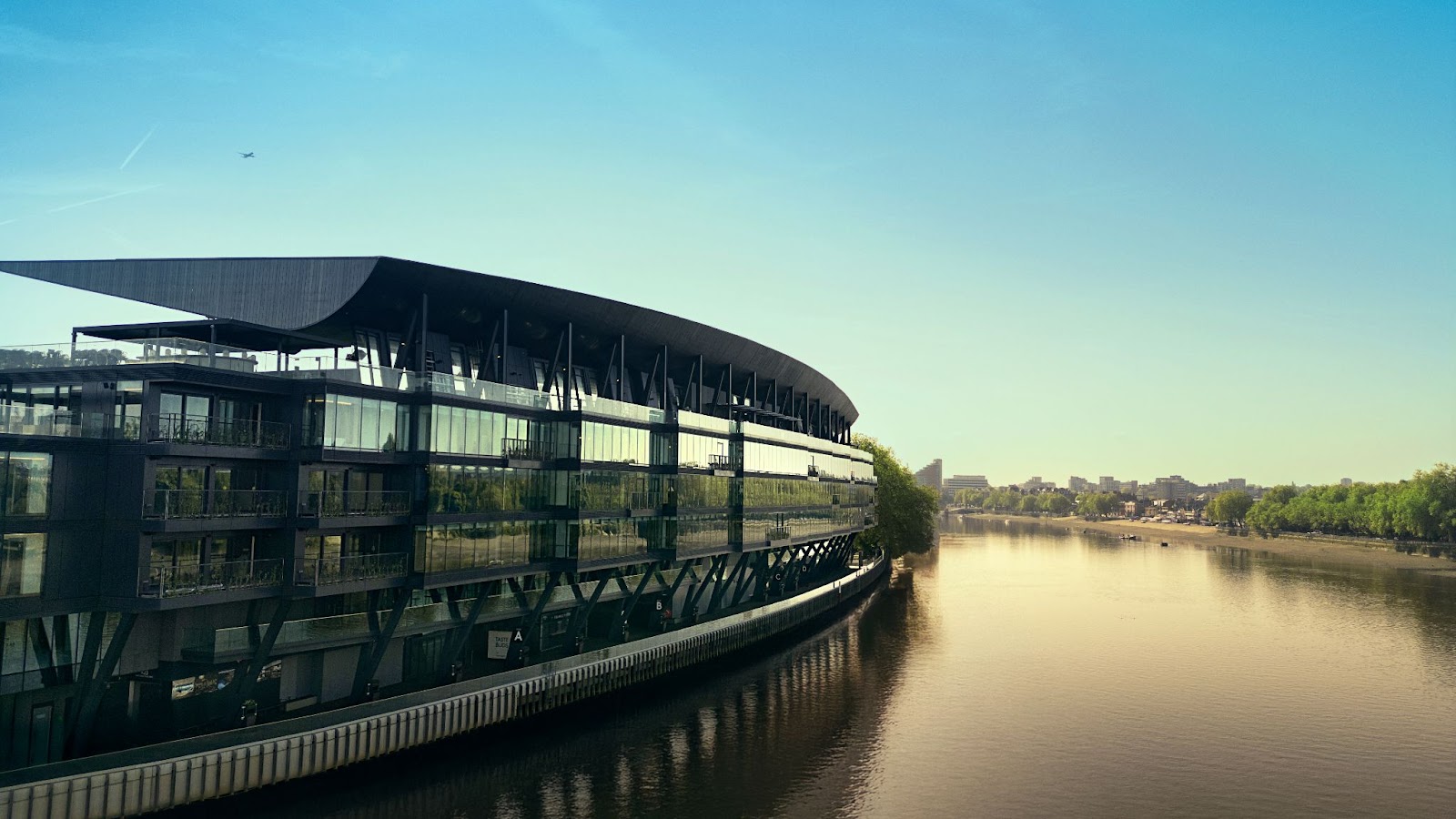Sheppard Robson has extended and upgraded its Camden offices using textures that interpret and augment the former piano factory
Tucked behind the bustling Parkway thoroughfare in Camden, north London, a former industrial piano factory has been home to architect Sheppard Robson for more than 40 years. A major refurbishment, which includes a series of new additions, has given the practice the opportunity to provide a greater range of amenity and social spaces as well as more variety of work settings. The expansion of the triangular-shaped building has been carried out alongside sensitive repairs intended to retain the robust character of the original building.
As you approach, the building’s original water tower – now restored – signals the entrance into the courtyard. As part of several additions to the building, a new entrance with meeting rooms above projects into the courtyard. The large, expansive windows are echoed on the other side of the courtyard, where new meeting rooms have been suspended off an existing walkway. Other additions include an extension to the rear of the building, with the extra space allowing for all the Sheppard Robson team – previously spread over three sites in Camden – to be co-located, while also expanding the range of amenities for staff and visitors.
On the ground floor of the extension, two new boardrooms are flanked by a landscaped seating area on one side, and an open client hub on the other. These presentation spaces can be reconfigured to host a range of events and meetings. The glazing of the boardrooms sits next to textured concrete surfaces that refer to the building’s heritage, with timber floors and a slatted ceiling adding warmth to the spaces.
The balance of raw and refined surfaces is intended to suggest a modern interpretation of the building’s heritage, and this narrative is woven into the signage and manifestation design, which refers to the history of the piano factory in Morse code. The enlarged office allows for a more generous reception space that leads into the staff hub and kitchen, where staff and visitors can work informally and socialise and which provide an exhibition space.
Metal
Like many of the materials introduced in the refurbishment, the use of metal is seen as a modern interpretation of the building’s past. Stainless steel hardware with a bronze PVD coating has been used throughout to add ‘tactile refinement’ through its patina and matt surface. The sense of robustness is enhanced by the hot-rolled steel that runs across the reception desks and incorporates integrated signage.
Timber
Engineered timber flooring by Element 7 has been used throughout, providing a durable surface that also adds warmth and sits well with the concrete and other industrial materials. The timber is high quality, with knots and a prominent grain, and is expected to age well. The flooring is complemented in the boardrooms by a timber-slatted ceiling, which boosts acoustic performance and conveys a feeling of warmth and comfort.
Lighting
Providing good levels of natural light was a priority, as was using artificial lighting to create an optimal environment in the meeting rooms. The line of lighting from the reception signals the route through the variety of spaces on the ground floor. Using the same system, Halo light fittings are integrated within the plasterwork above meeting desks to give a range of lighting levels that can be adjusted depending on the type of work and natural light levels. There are playful references to the importance of lighting in a coloured lightbox installation in the client hub.
Glass
The refurbishment built upon ideas that the practice employed when first converting the building from a derelict warehouse in the 1970s. The original remodelling introduced large timber picture windows to flood the triangular floor plates with natural light. The frames have now been restored and large metal windows added around the courtyards. These allow more natural light to reach the interiors, while acting as a shop window into the studios and connecting the courtyard with the inside.
Textiles
As a counterpoint to the robust concrete and brick, textiles have been incorporated into the interior design to soften the spaces. These add accents of richness and colour, and include velvet coverings to sofas in the reception and the staff hub, as well as the curtains that can provide privacy to the boardrooms. A bespoke rug, woven by Helen Yardley, helps define pockets of space that are more informal, comfortable and welcoming.
Concrete
Various forms of concrete are used to reinforce the solid, robust nature of the former industrial building. The material makes up several pieces of ‘architectural furniture’ including the moulded reception desk and the cast panels that provide surfaces in the washrooms. Concrete featuring different surface qualities is employed throughout, including panels lining the boardrooms, and matt concrete-coloured tiles are featured in the reception.






























